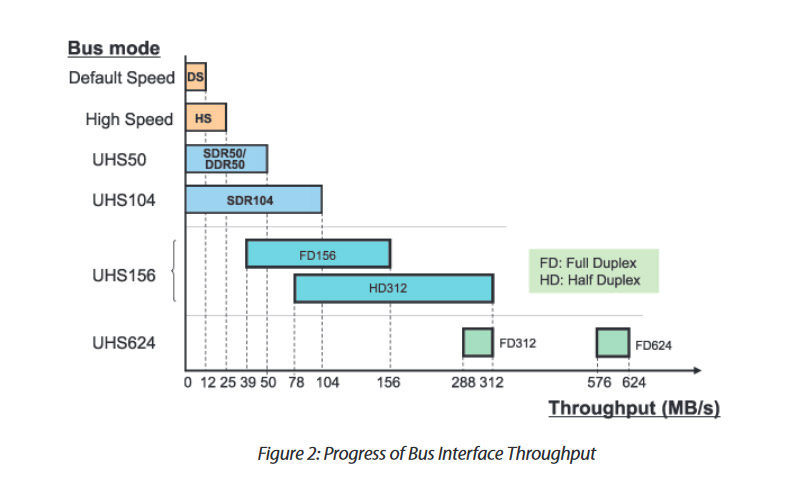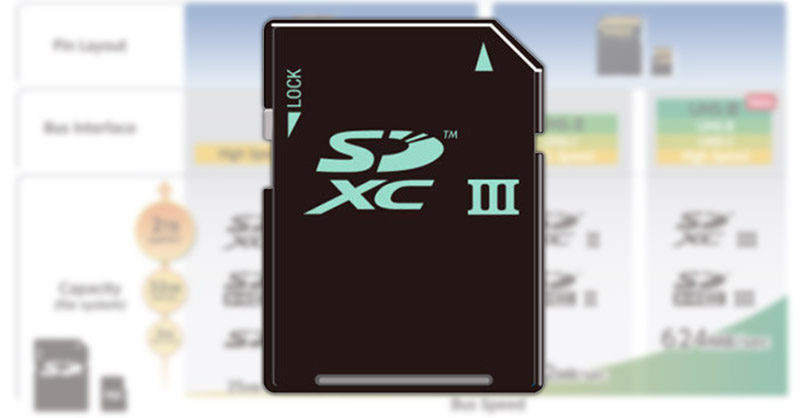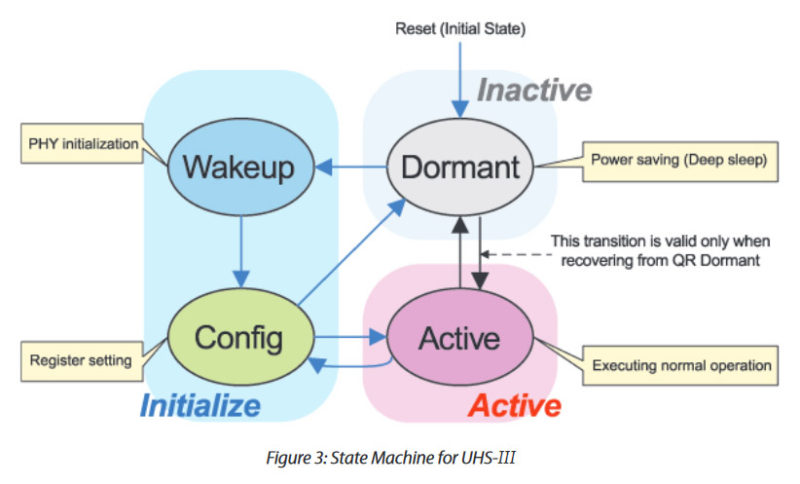UHS-III Interface Sets 624 MB/sec SD Card Transfer Rate Standard
Ron Perillo / 7 years ago
The SD Card association (SDA) has released the SD 6.0 specification which adds a new level of UHS-III bus interface, providing up to 624 MB/sec transfer rates. This update to the Ultra High Speed standard directly answers the demand for 8K, 360-degree and 5G IEEE802.11ax mobile network support. The upgrade is fully backwards compatible and includes all the functionalities of the UHS-II standard with the addition of 3.12/6.24 Gpbs FD modes and Quick Recovery function.
There are four available bitrate segments in UHS-III, the first two Range A and B were introduced with UHS-II, having an RCLK frequency of 26-52MHz. By 8b/10b coding and half-duplex mode, setting D0 and D1 lanes to the same direction for data rate enhancement yields maximum transmission speeds for Range A and B of 156MB/s and 312MB/s, respectively. The two other Range C and D added in UHS-III has an RCLK frequency of 48-52MHz and by 8b/10b coding and full-duplex mode (bus direction switch is not needed), it can reach transmission rates of 312MB/s and 624MB/s, respectively. A UHS-III card must support all ranges from A through D. SD memory cards have been progressing in two aspects: greater storage capacity and faster bus speed. As SDA propels higher storage capacity and faster bus speed specifications, it enables applications to manage big data with an SD memory card.
| Range | RCLK Frequency | Available Bitrate/Lane | Max Transmission Speed | Note |
| Range A | 26 – 52 MHz | 0.39 – 0.78 Gbps | 156 MB/s (Half-Duplex) | Available in UHS-II/III |
| Range B | 26 – 52 MHz | 0.78 – 1.56 Gbps | 312 MB/s (Half-Duplex) | Available in UHS-II/III |
| Range C | 48 – 52 MHz | 2.88 – 3.12 Gbps | 312 MB/s (Full-duplex) | Available in UHS-III |
| Range D | 48 – 52 MHz | 5.76 – 6.24 Gbps | 624 MB/s (Full-duplex) | Available in UHS-III |
 The UHS-III standard’s quick recovery function is designed so it can enter active state much quicker. In UHS-II, before the SD card can enter the dormant power saving state, it has to go through Wake-up and Config states first in order to get back to a working Active state. In UHS-III, the SD card can use a Quick Recovery Dormant (QR dormant) function to shorten the time it needs to reach Active state.
The UHS-III standard’s quick recovery function is designed so it can enter active state much quicker. In UHS-II, before the SD card can enter the dormant power saving state, it has to go through Wake-up and Config states first in order to get back to a working Active state. In UHS-III, the SD card can use a Quick Recovery Dormant (QR dormant) function to shorten the time it needs to reach Active state.





















